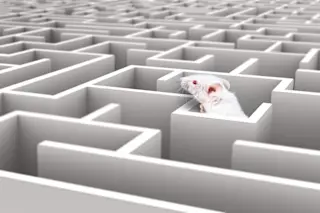This is the conditioning box where pigeons learned their new skill. (Credit: Levenson et al.) Would you rather have a human or pigeons scrutinize medical images to detect the presence of cancer? At first blush, it seems like an absurd question. But if you went out on a limb and chose pigeons, their diagnoses, surprisingly, would rival a human’s in accuracy. In a thought-provoking study, researchers trained pigeons to look at anatomical images and distinguish between benign and malignant breast tissue. After about 14 days on the job, a pigeon flying solo could scope out cancerous tissue with 85 percent accuracy. In other words, in less than a month, pigeons picked up a skill that takes an inexperienced human observer considerable training to master. Let that sink in for a moment. Pigeon Pathologists To train pigeon pathologists, a team led by Richard Levenson from the University of California Davis Medical ...
Pigeon Pathologists Know Cancer When They See It
Discover how pigeon pathologists rival humans in accuracy, detecting cancer in medical images with surprising skill.
More on Discover
Stay Curious
SubscribeTo The Magazine
Save up to 40% off the cover price when you subscribe to Discover magazine.
Subscribe













